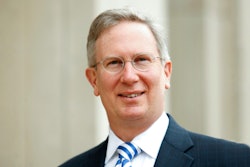All 10 University of California campuses need to make diversity an integral element of academic planning, faculty hiring, research agendas, curricular development and program reviews, a taskforce on improving faculty diversity recommended Tuesday.
The UC President’s Task Force on Faculty Diversity raised concerns about UC’s failure to take advantage of the growing pool of under-represented minority scholars. While faculty diversity challenges aren’t limited to UC, the university system could do more to retain sought-after minority faculty and establish a pipeline of future faculty by boosting minority participation in doctoral programs, particularly in science and engineering.
“Faculty diversity is one of the most pressing issues facing the University of California today,” said president Robert Dynes. “UC will remain competitive as a leading institution of higher education only if it is successful in addressing the under-representation of minorities and women among its faculty and academic leaders.”
The 10-member task force, comprised of academic administrators from each UC campus, presented its findings and recommendations at the President’s Summit on Faculty Diversity in Oakland, Calif., yesterday.
The percentages of African-American and American Indian faculty in the UC system have remained flat over the years, with Blacks accounting for 2.5 percent and American Indians 0.3-0.4 percent of faculty.
But there has been some growth among some faculty of color, with the number of Hispanics increasing from 279 in 1989 to 424 in 2005. There were 1,136 Asian faculty in 2005, up from 542 in 1989. Four percent of UC faculty in 2005 were Hispanic, 13.4 percent Asians and 78.6 percent White.
Some faculty “report experiences of isolation and marginalization in their academic life,” according to the report. Nearly 25 percent of minority faculty are concentrated in education, language and ethnic studies.
The task force, appointed in May 2005, said academic administrators should be held accountable for promoting a diverse academic climate by providing annual reports at the department, division and campus levels, coupled with monitoring and resource-based incentives for diversity efforts.
Some campuses have already implemented some of the task force’s recommendations, such as appointing high-level academic administrators who focus exclusively focused on faculty diversity. For example, UCLA has created the UCLA Office of Faculty Diversity and has developed a web site to address faculty diversity.
The President’s Postdoctoral Fellowship Program, for scholars who contribute to diversity through research and teaching, has produced 40 new faculty members since 2003. Also, there is an advisory committee addressing diversity and gender equity at almost every campus.
— By Shilpa Banerji
© Copyright 2005 by DiverseEducation.com


















